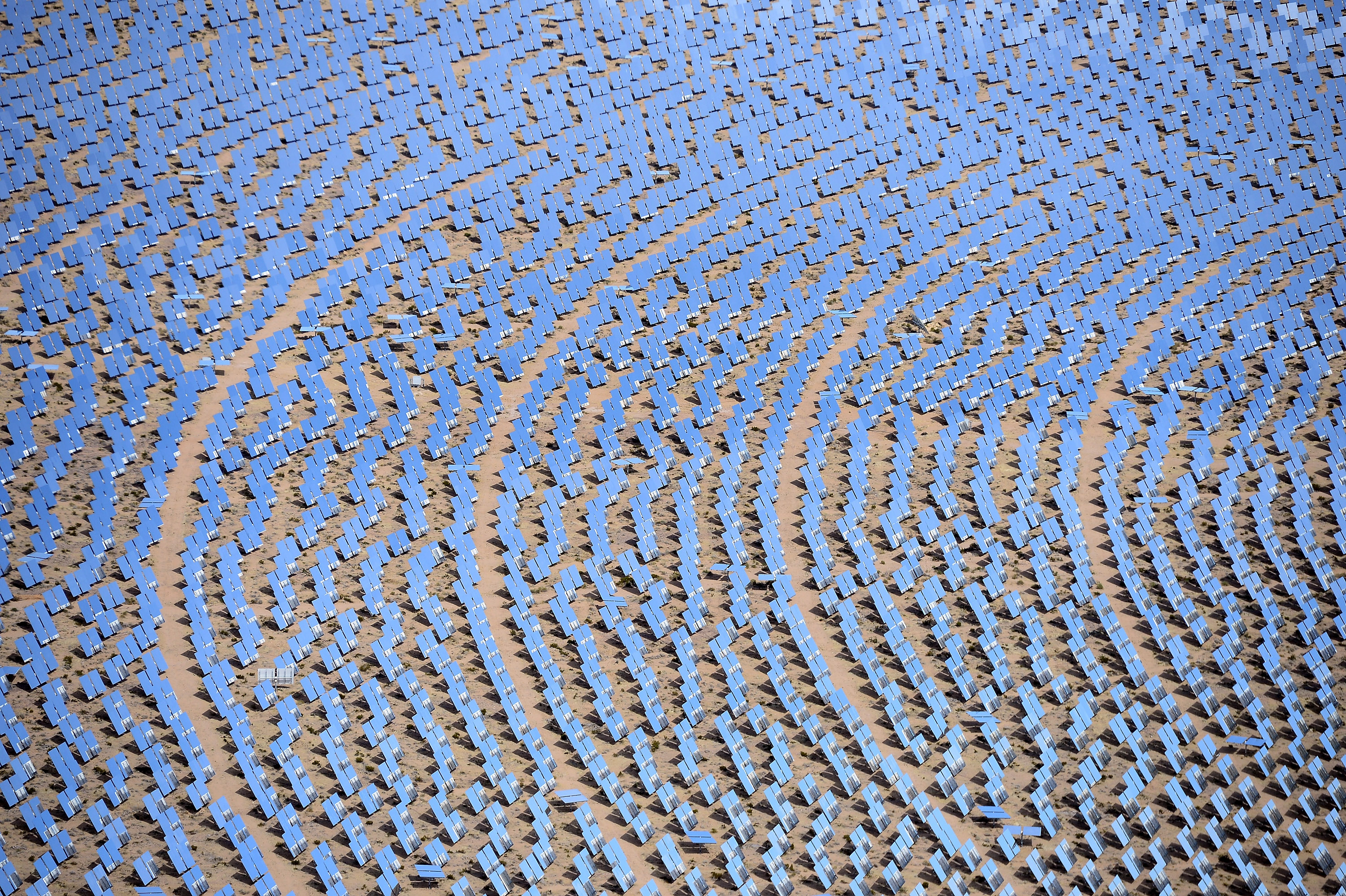Making Sense of Trump’s Surprising Investment in Solar

On Tuesday, the U.S. Department of Energy announced it will invest $62 million to advance the state of concentrated solar power, at the apparent expense of solar photovoltaics that so far have roundly bested the rival renewable technology in the marketplace (see “One of the World’s Largest Solar Facilities Is in Trouble”).
The press release trumpeted that the solar sector has already achieved the stated 2020 goal of the department’s SunShot Initiative, namely lowering the price of power from utility-scale, photovoltaic plants to 6 cents per kilowatt-hour. It added that the DOE will continue research to decrease those costs, but stressed “new funding programs will focus on a broader scope of (Trump administration) priorities, which includes early-stage research to address solar energy’s critical challenges of grid reliability, resilience, and storage.”
Concentrated solar is at the top of the reshuffled list of research priorities, suggesting DOE officials think the technology can do more to improve grid stability over the long term. That’s because, while the energy it produces has been far more expensive than photovoltaics, it can store some of it in the form of heat. That means it can continue to generate electricity even when the sun isn’t shining, helping to balance supply-and-demand loads on the grid.
Given past behavior, the announcement raises at least some suspicions that the department, under Energy Secretary Rick Perry, may be seeking additional ways to diminish support for photovoltaics, potentially slowing progress behind the solar technology that’s done the most so far to threaten fossil fuels. After all, it follows the Trump Administration’s 2018 budget proposal to cut funding for the Office of Energy Efficiency and Renewable Energy, which oversees the SunShot program, by nearly 70 percent. (So far, Congress has pushed back on most of the proposed cuts to DOE research programs.)
But with that all said, energy researchers are quick to stress that the storage issue is a very real problem for photovoltaics—and a very real advantage for concentrated solar.
“[Concentrated solar power] today hasn’t been able to compete with photovoltaics, but there are some promising research areas,” says Dan Reicher, executive director of the Steyer-Taylor Center for Energy Policy and Finance at Stanford. “Given the climate challenge, we need to put eggs in many, many zero-carbon baskets.”
Concentrated solar generally relies on mirrors to concentrate sunlight, which converts liquid into turbine-driving steam. Some of that heat can also be stored using molten-salt tanks, allowing the plants to continue supplying electricity when the sun isn’t shining.
In contrast, photovoltaic power plants only work when the sun is out, unless they’re coupled with expensive batteries or other forms of external storage. The same goes for wind.
The downside to concentrated solar, however, is that it’s proven to be more expensive and technically challenging. Notably, the $2.2 billion Ivanpah plant in California’s Mojave Desert has struggled to meet production goals and produce electricity at competitive prices. The facility has been relying on increasing amounts of natural gas, the local Press-Enterprise newspaper reported earlier this year.
But there are some promising research avenues that could improve efficiency and costs. In 2015, the DOE’s moonshot ARPA-E division provided $24 million in funding to 11 projects focused on essentially combining the two approaches into what’s known as “concentrated photovoltaic technologies,” using lenses and mirrors to concentrate sunlight onto small photovoltaic cells (see “DOE Attempts to Jump-Start Concentrated Solar”).
"Investments in concentrated solar make a whole lot of sense,” said David Victor, an energy policy researcher at the University of California, San Diego, in an e-mail. “My general impression is that we have relatively overinvested in photovoltaics and underinvested in [concentrated solar]."
Under the new DOE program, awardees will have to contribute 20 percent of their own funds, raising the total pool of public and private capital to $100 million, the department says.
David Hart, director of the Center for Science, Technology, and Innovation Policy at George Mason University, says that skepticism about political motives is reasonable in this case. But it’s also appropriate for government support to shift away from technologies that are reaching market maturity and toward those that aren’t as far along.
“As PVs have matured, most of the remaining challenges lie in manufacturing and economies of scale,” he says. “That’s appropriately handed off to the private sector.”
Keep Reading
Most Popular
Large language models can do jaw-dropping things. But nobody knows exactly why.
And that's a problem. Figuring it out is one of the biggest scientific puzzles of our time and a crucial step towards controlling more powerful future models.
The problem with plug-in hybrids? Their drivers.
Plug-in hybrids are often sold as a transition to EVs, but new data from Europe shows we’re still underestimating the emissions they produce.
Google DeepMind’s new generative model makes Super Mario–like games from scratch
Genie learns how to control games by watching hours and hours of video. It could help train next-gen robots too.
How scientists traced a mysterious covid case back to six toilets
When wastewater surveillance turns into a hunt for a single infected individual, the ethics get tricky.
Stay connected
Get the latest updates from
MIT Technology Review
Discover special offers, top stories, upcoming events, and more.